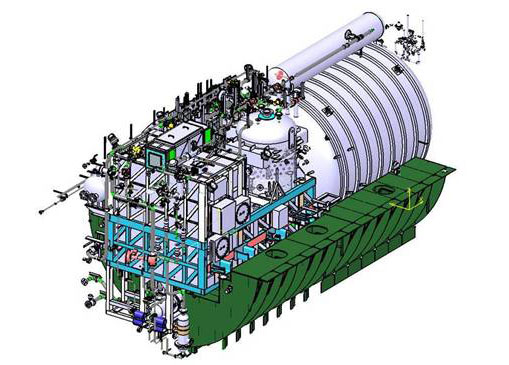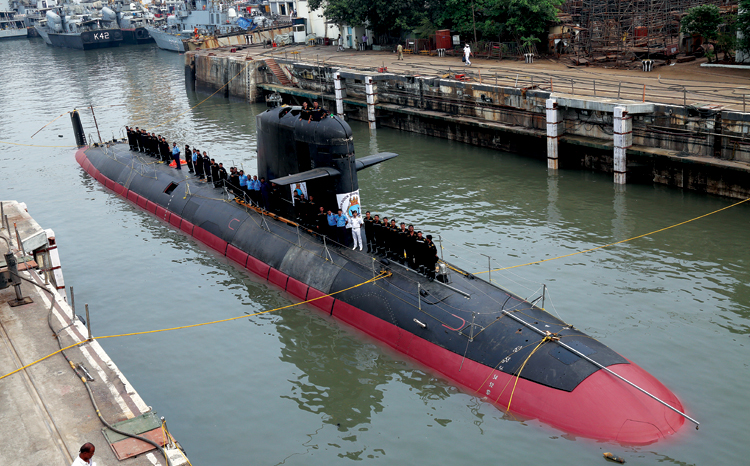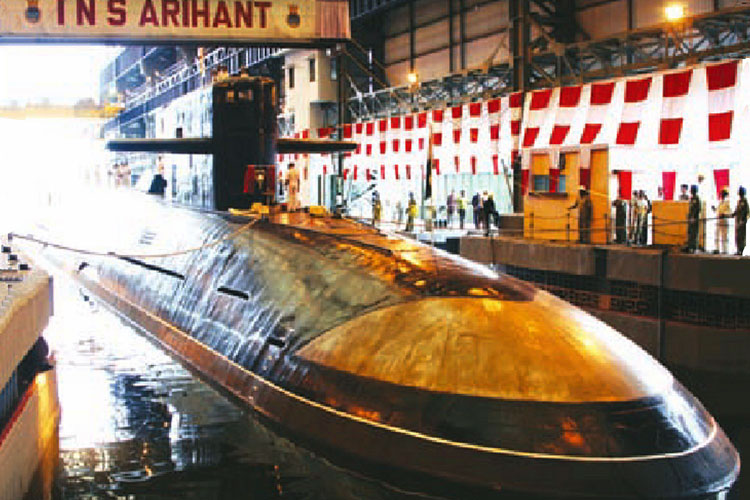INDIAN ARMED FORCES CHIEFS ON
OUR RELENTLESS AND FOCUSED PUBLISHING EFFORTS

SP Guide Publications puts forth a well compiled articulation of issues, pursuits and accomplishments of the Indian Army, over the years

I am confident that SP Guide Publications would continue to inform, inspire and influence.

My compliments to SP Guide Publications for informative and credible reportage on contemporary aerospace issues over the past six decades.
DAC approves RFP for construction of six submarines
This project envisages indigenous construction of six conventional stealth submarines equipped with the state-of-the-art Air Independent Propulsion (AIP) system, at an estimated cost of 43,000 crore (about $5.8 billion)
 |
The Author is former Director General, Army Air Defence and was a member of Integrated Guided Missile Development Programme. |

The Defence Acquisition Council (DAC), in its meeting held under the Chairmanship of Defence Minister Rajnath Singh on June 04, 2021, approved the issue of RFP for construction of Conventional Submarines under the Strategic Partnership (SP) Model. This project envisages indigenous construction of six conventional stealth submarines equipped with the state-of-the-art Air Independent Propulsion (AIP) system, at an estimated cost of 43,000 crore (about $5.8 billion). This is a landmark approval, being the first case processed under the SP model. The SP model for defence acquisition was announced on May 31, 2017 to promote ‘Make in India’ in defence manufacturing. The strategic partnership model seeks to identify a few Indian private companies as Strategic Partners who would initially tie up with a few shortlisted foreign Original Equipment Manufacturers (OEMs) to manufacture mega military platforms. Initially the selection of SP model would be confined to Fighter Aircraft, Helicopters, Submarines, and Armoured Fighting Vehicles/Main Battle Tanks.
Indian Navy’s 30 year Submarine Programme
A 30-year submarine building programme was approved by the Cabinet Committee on Security (CCS) in July 1999. It envisaged the manufacture of 24 boats in India over 30 years; the first twelve with transfer of technology from foreign collaborators by 2012 and the next twelve indigenously by 2030. It is pointless stating that the programme is pitifully short of its target. The target of construction of 24 submarines has been reduced to 18. In a report in March 2020, Parliament’s Standing Committee on Defence stated in a report that, “there are 15 conventional submarines and two nuclear submarines” in the Indian Navy and “majority of the conventional submarines are over 25 years old”.
This is the first case processed under the SP model which seeks to identify Indian private companies as Strategic Partners who would initially tie up with a few shortlisted foreign Original Equipment Manufacturers (OEMs)
Project 75
Six Scorpene-class submarines had been ordered by India in 2005, as part of the Project 75 programme, and are being constructed by the Mazagon Dock Limited with assistance of Naval Group. So far three submarines are in service, two are undergoing sea trials and the sixth is under construction.

Subsurface Nuclear Submarines
It was reported that in view of the expanding naval force of China, the Indian Navy wanted to replace Project 75(I) with six subsurface nuclear (SSNs) submarines. The first boat INS Arihant was commissioned into the Indian Navy in 2016 and a second boat INS Arighat is expected to join service by the end of 2021. The Navy finally requires six nuclear submarines, some off them having nuclear propulsion as well as nuclear ballistic missiles. Meanwhile the Ministry of Defence is going ahead with its Project 75(I).
Project 75(I)
AIP. The addition of AIP is one of the key upgrades from older submarines on the Navy’s inventory. The conventional submarines have to surface every few days (called snorkelling) to charge their batteries thus reducing their endurance to stay submerged and loosing the element of surprise. The development of Air Independent Propulsion (AIP) greatly improved the underwater endurance of these submarines and gave them a distinct advantage. The AIP technology can be installed on existing older generation submarines by inserting a new hull section during a retrofit. AIP allows a non-nuclear submarine to operate without access to atmospheric oxygen and can augment or replace the diesel-electric propulsion system of non-nuclear vessels.
Once the RFP is issued, each strategic partner along with the chosen OEM will respond to the RFP, followed by technical evaluation and finally, a commercial bid. The first submarine built under the project is likely to be delivered by 2030.
Fuel Cell. A Fuel Cell is a device which converts chemical energy into electricity and is preferred in AIP technology. Phosphoric Acid Fuel Cells and Proton Exchange Membrane Fuel Cells are currently used in submarines. Germany is said to be the world leader in developing and fielding this type of AIP. France is developing a new generation Fuel Cell AIP as a successor to its MESMA. India’s DRDO is also developing a Fuel Cell AIP to be integrated on their submarines. It has been reported that the last two of the Kalvari-class SSK's are to be fitted with DRDO Fuel Cell AIP.

Short Listed Companies
Mazagon Dock Shipbuilders Limited (MDL) and Larsen & Toubro have been shortlisted as strategic partners who will have to respond to the RFP in partnership with one of the five OEMs which have been shortlisted by an empowered committee in 2020. They are Rosoboronexport (ROE) of Russia, ThyssenKrupp of Germany, Naval Group of France, Navantia of Spain and Daewoo Shipbuilding & Marine Engineering of South Korea. The project had been approved in 2007 but no progress was made until February 2019 when the government approved the Acceptance of Necessity. Once the RFP is issued, each strategic partner along with the chosen OEM will respond to the RFP, followed by technical evaluation and finally, a commercial bid. The first submarine built under the project is likely to be delivered by 2030.
Force level of nuclear and conventional submarines of potential adversaries China. The China’s Navy has approximately a total of 13 nuclear-powered attack (SSN), guided-missile (SSGN) and ballistic-missile (SSBN) submarine fleet . It has about 48 conventional submarines of various types.
Pakistan. The Pakistan submarine fleet consists of two Agosta-70 boats (Hashmat-class) and three modern Agosta-90B (Khalid-class) submarines, all of which are of French origin. All the Agosta-90B submarines are AIP capable. In 2015, Pakistan announced a $5 billion contract with China to purchase eight attack submarines — likely Type 039 or Type 041 Yuan-class vessels. Karachi Shipyard & Engineering Works Limited (KSEW) will construct four of these submarines in Pakistan while the China Shipbuilding Trading Company (CSTC) will build the remaining four in China. In 2016, Pakistan sealed the deal with a long-term loan from China to finance the project. The first four vessels are expected by the end of 2023.
P75(I) will be one of the largest ‘Make in India’ projects and will be an enabler to induct and absorb advance marine propulsion technologies, navigation systems, submerged communication systems, and surface and sub-surface sensors. It will also leverage and inject new life into the defence - industrial ecosystem for submarine construction and other allied technologies in India. The successful completion of the project should lead India into increased self reliance and reduced dependence on foreign OEMs.It is also hoped that the project does not suffer bureaucratic red tape(both within the Navy and the MoD), economic delays due to financial challenges and follows all laid out time lines to the dot.





